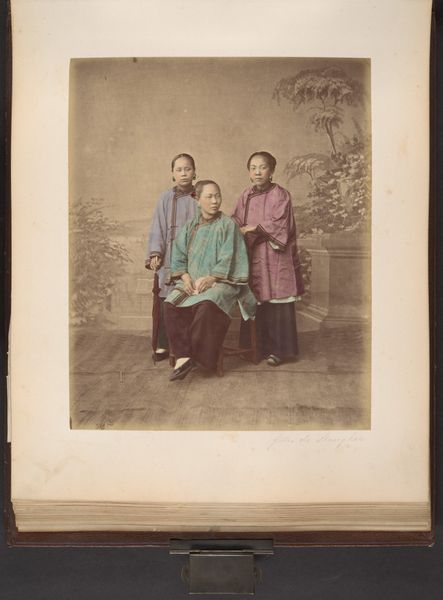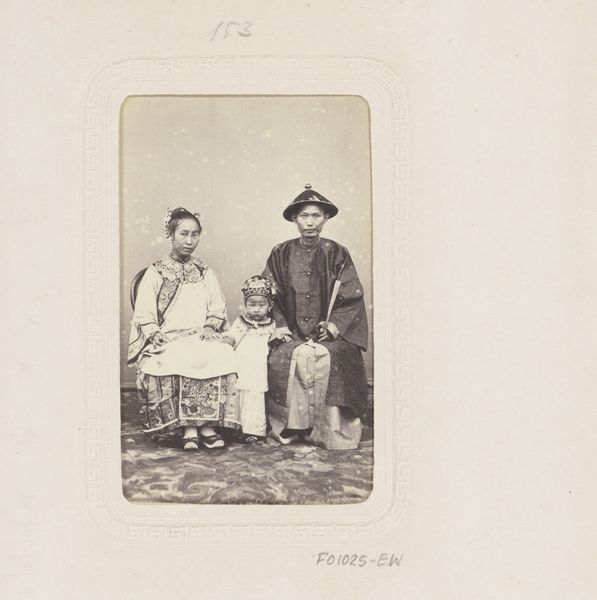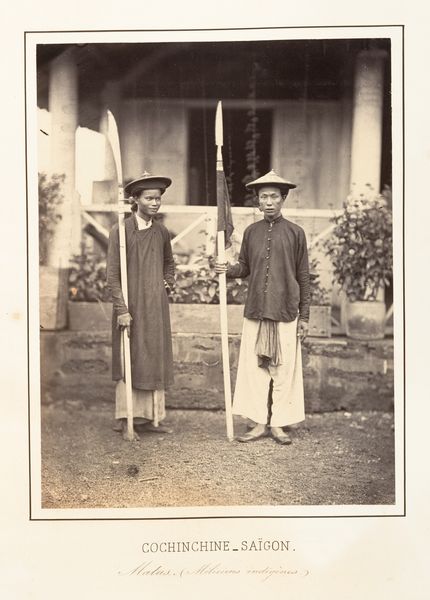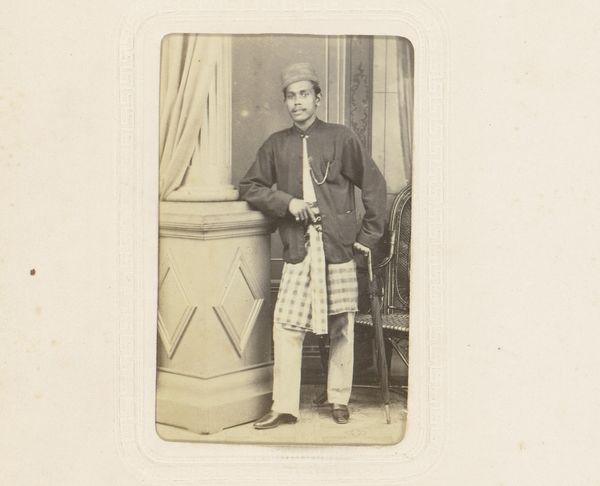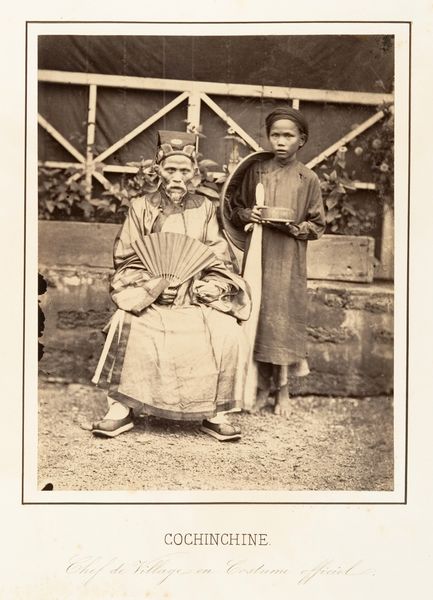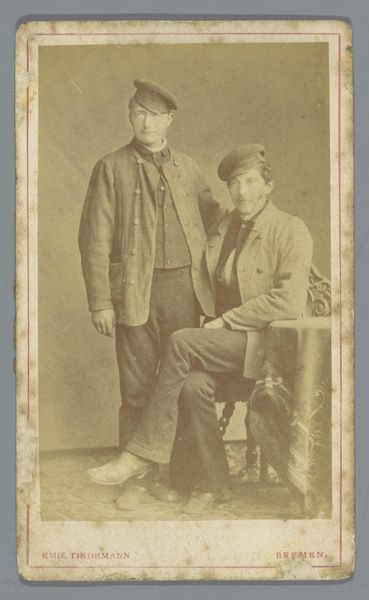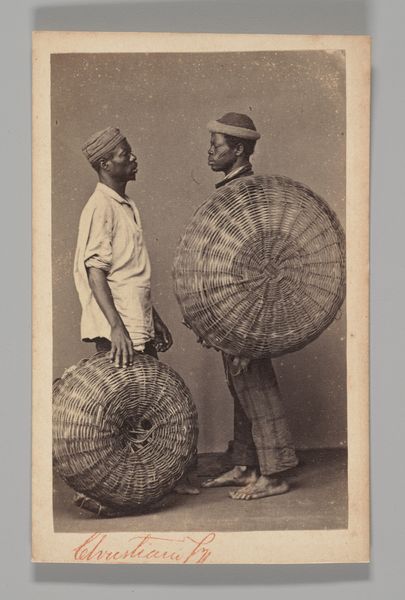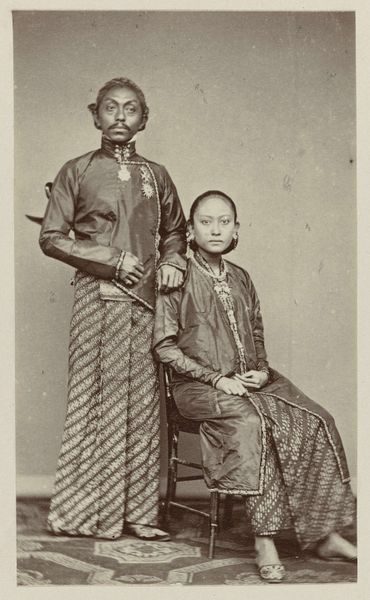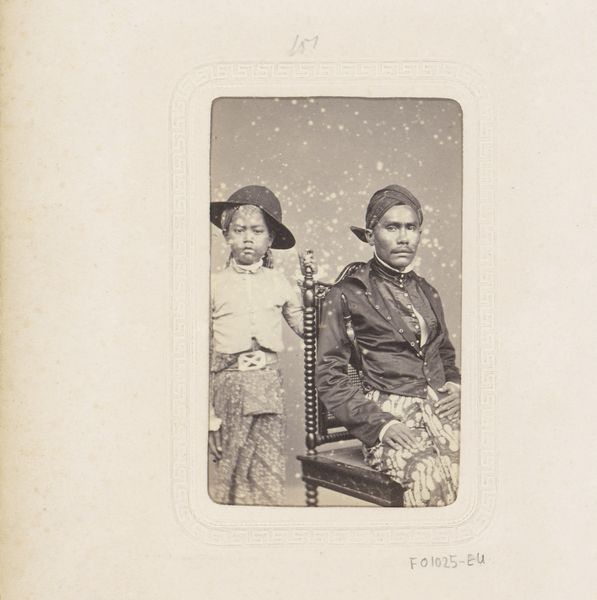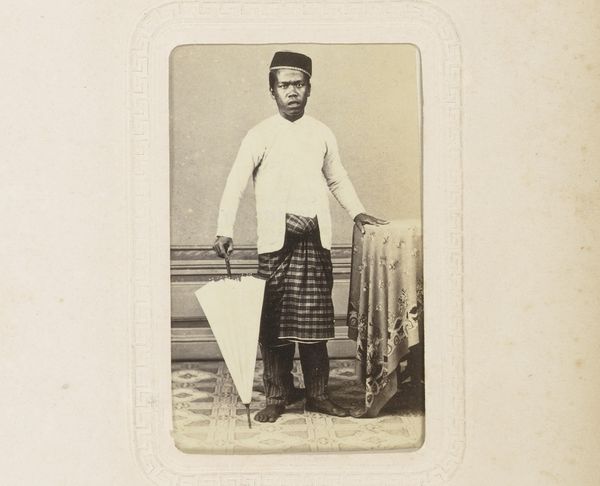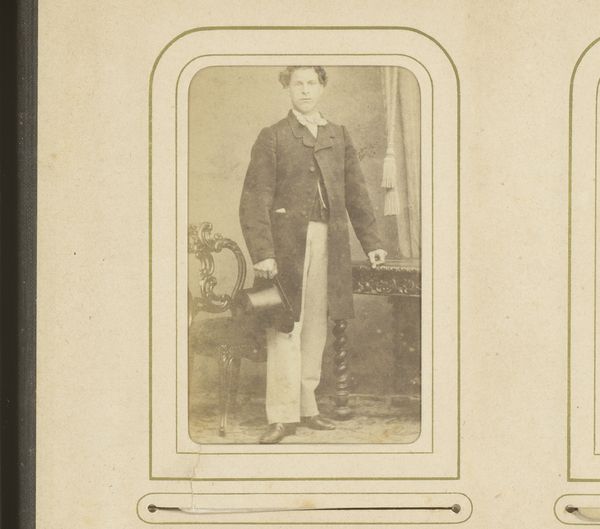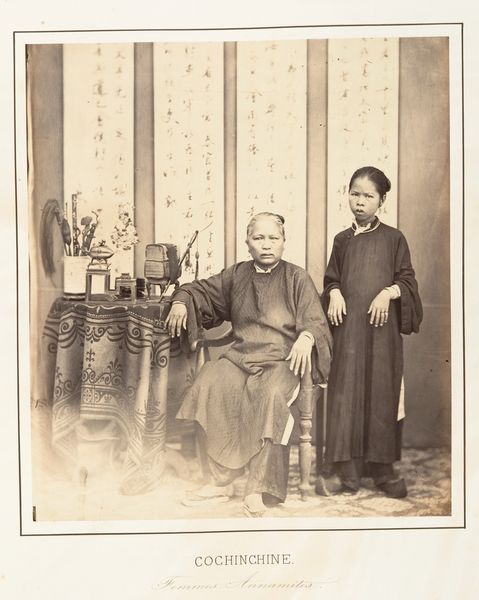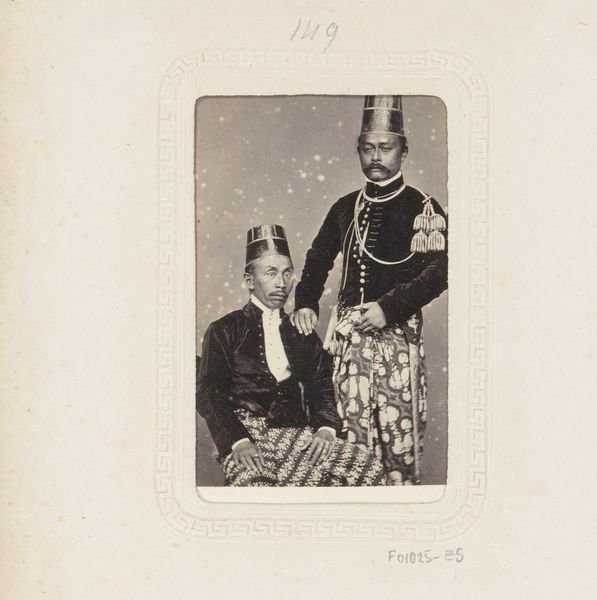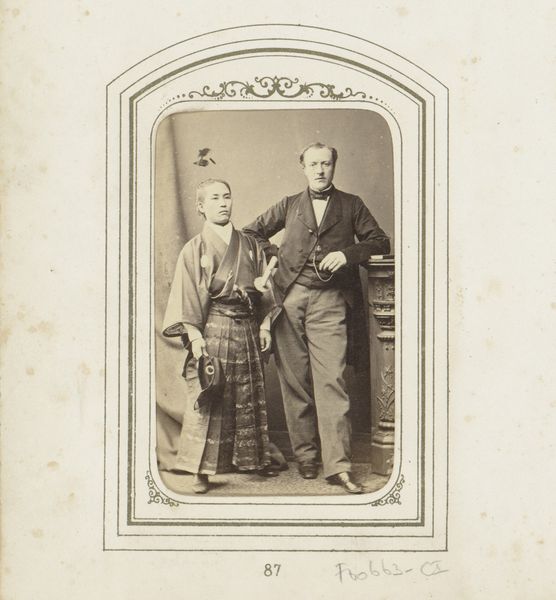
photography, collotype, gelatin-silver-print, albumen-print
#
portrait
#
african-art
#
photography
#
historical fashion
#
collotype
#
coloured pencil
#
orientalism
#
gelatin-silver-print
#
genre-painting
#
watercolor
#
albumen-print
Dimensions: height 100 mm, width 62 mm
Copyright: Rijks Museum: Open Domain
Curator: Well, this albumen print certainly has stories to tell. It’s titled "Portret van twee jongens, vermoedelijk in Nederlands-Indië" or “Portrait of Two Boys, presumed to be in Dutch Indies”, placing it somewhere between 1850 and 1900. I just love the way the light catches on those little faces, they look so stoic! Editor: My first thought is: that sepia tone casts such a melancholic, nostalgic shadow. Two boys posed formally… yet I wonder about their untold realities under the colonial gaze? Curator: Ah, but doesn’t that backdrop give it a touch of exotic mystery? It seems like a staged environment. I imagine someone meticulously arranging everything for this shot. Those carved pillar they’re leaning on—it's clearly there to represent something. Editor: Precisely. The very act of staging is deeply implicated in power. Photography of this era often served colonial agendas, exotifying and ‘othering’ those who were photographed, freezing them in a tableau of Western imagination. Even that elaborate column evokes a sense of European appropriation of indigenous motifs. Curator: Do you think those garments tell part of that story? The boy in the dark jacket and pants looks rather… practical? almost subdued, versus his peer wearing the striking attire. Editor: Indeed. Clothing, in such images, functions as a signifier loaded with meaning. One outfit seems almost deliberately “westernized,” implying perhaps assimilation, while the other points towards what colonizers considered “native.” That simple contrast itself reveals layers of imposed cultural identity. Curator: I see that. It makes me wonder how those boys felt—were they even consulted on how they'd like to be seen, or if at all. The photograph, so still, hides what had to have been so much buzzing humanity. I get a bittersweet pang thinking of it. Editor: And let's not forget that early photography, even under the guise of portraiture, was deeply involved in constructing a racialized gaze, normalizing hierarchies through representation. So yes, there’s beauty and humanity present but alongside complex ethical questions of power. Curator: Thanks for shedding light on such uncomfortable undertones present in a single picture— it definitely helps to observe it with an even wider, yet deeper perspective. It really does shift the narrative and invite a more thoughtful connection. Editor: Precisely, bringing awareness to power relations that often hide beneath what seems like historical artifact is key to seeing the artwork as a document not only of beauty, but of an intricate network of power dynamics.
Comments
No comments
Be the first to comment and join the conversation on the ultimate creative platform.
